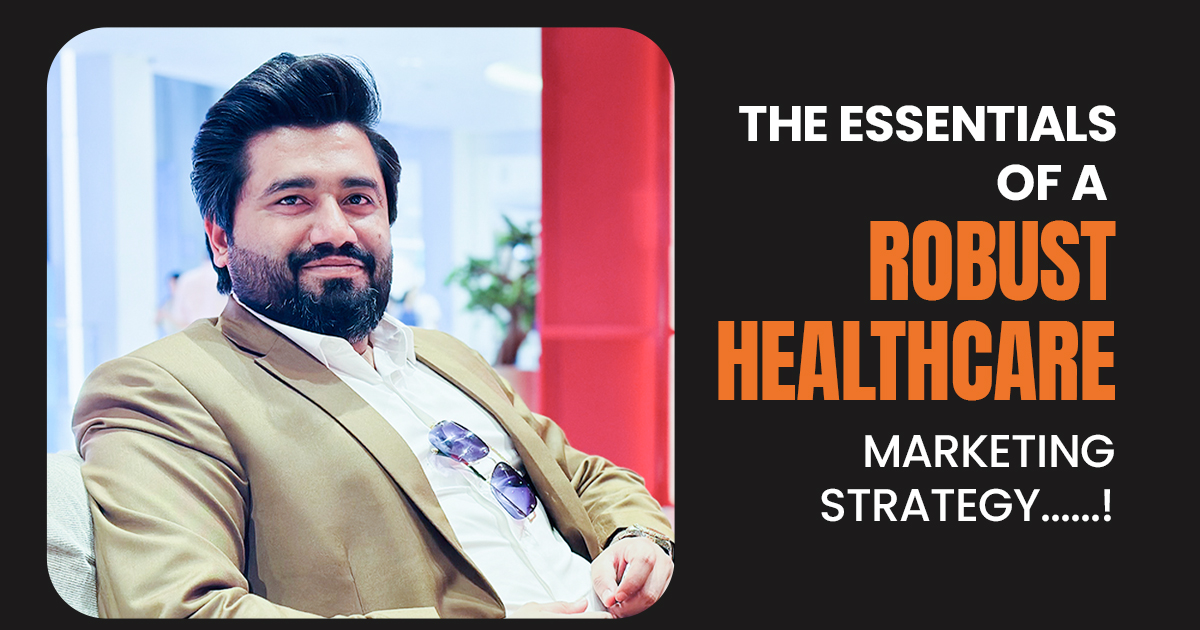
The Essentials of a Robust Healthcare Marketing Strategy – Ayaz Awan
In the fast-evolving landscape of the healthcare industry, marketing plays a crucial role in connecting patients and healthcare providers. A tailored marketing strategy is not just about promoting services but also about enhancing patient care and engagement. This detailed guide explores the critical components of a robust healthcare marketing strategy, designed to meet the healthcare sector’s unique needs and regulatory standards.
Table of Contents
ToggleUnderstanding Your Target Audience
A successful healthcare marketing strategy begins with a deep understanding of your target audience. This includes both potential patients and professional partners like referring physicians. Segmenting the audience by demographics, medical needs, and preferences allows for more personalized marketing efforts, which can significantly enhance patient engagement and satisfaction. For instance, older patients might prefer traditional communication channels such as direct mail or telephone, whereas younger demographics might be more accessible via social media or email.
Gathering data through patient surveys and feedback is crucial in refining marketing strategies and understanding patient expectations. According to a PatientPop survey, 74.6% of patients consider positive online reviews important in choosing a healthcare provider, underscoring the need for healthcare providers to manage and optimize their online presence.
Also read: Stopping Advertising to Save Money is Like Stopping Your Watch to Save Time!
Branding in Healthcare
Branding in healthcare is fundamentally about building trust. A healthcare provider’s brand should communicate reliability, care, and expertise. Consistent messaging across all platforms—be it your website, social media, or print materials—is essential to reinforce the brand’s values. For example, the Mayo Clinic’s brand is synonymous with trusted, high-quality care, which is consistently communicated through their patient education materials, website, and advertising.
Digital Marketing Techniques
Digital marketing is a cornerstone of modern healthcare marketing due to its reach and scalability. Key elements include:
- Website Optimization: Your website should be the cornerstone of your digital strategy, designed to be user-friendly and informative. Ensuring it is mobile-friendly is crucial, as Google reports that 63% of their U.S. organic search traffic originates from mobile devices.
- Search Engine Optimization (SEO): Local SEO helps patients find you through localized searches. Implementing keywords like “family doctor in [City Name]” can dramatically improve visibility in search results.
- Content Marketing: Providing valuable content such as blog posts about common health issues or tips for maintaining a healthy lifestyle can help establish your authority in the healthcare field. Video content is particularly effective. A study by HubSpot indicates that 54% of consumers want to see more video content from brands they support.
- Social Media Engagement: Regular updates on platforms like Facebook or Instagram can keep your audience engaged and informed. For instance, daily health tips, news about your services, or behind-the-scenes looks at your facility can create a sense of community and openness.
Also read: Win the Marketing Game With Psychology
| Marketing Channel | Key Metrics | Tools for Measurement | Expected Impact |
|---|---|---|---|
| Website Optimization | Conversion rate, Bounce rate | Google Analytics, Hotjar | Improve patient engagement, decrease drop-offs |
| SEO (Local) | Local search rankings, Click-through rate | Google Search Console, SEMrush | Increase visibility in local searches |
| Content Marketing | Page views, Social shares | Google Analytics, BuzzSumo | Enhance brand authority, increase patient trust |
| Social Media Engagement | Engagement rate, Follower growth | Facebook Insights, Instagram Analytics | Build community, improve brand loyalty |
| Offline Events | Attendance numbers, Patient feedback | Surveys, Event sign-ups | Direct community engagement, immediate feedback |
| Patient Feedback | Satisfaction scores, Net Promoter Score (NPS) | SurveyMonkey, Google Forms | Direct measure of patient experience |
| Telehealth Services | Usage rate, Patient retention | Internal data tracking, CRM systems | Assess adoption and satisfaction with telehealth |
| Traditional Advertising | Call volume, Service inquiries | Call tracking software, CRM systems | Measure direct response to advertising |
Offline Marketing Strategies
While digital strategies are crucial, traditional offline methods remain valuable, especially in less digitally connected demographics. Engaging with the community through health fairs, free screening events, and wellness seminars can build goodwill and raise awareness of your services. Traditional advertising, such as billboards and local newspaper ads, still plays a key role in building brand recognition.
Patient Experience and Relationship Management
The patient experience is at the heart of healthcare marketing. This includes not only the care received but also how patients feel they are treated by your staff and how easily they can navigate your services. For instance, Cleveland Clinic has found that improving patient experience correlates with better profitability. Training staff to improve their communication skills and implementing effective patient feedback mechanisms are critical steps in this process.
Compliance and Ethical Marketing
Navigating the regulatory landscape is crucial for healthcare marketing. Ensuring compliance with HIPAA and other regulations is necessary to protect patient privacy and build trust. Ethical marketing should focus on being truthful and transparent in all marketing materials to avoid misrepresentations of services.
Utilizing Technology and Innovation
Innovative technologies like telehealth, mobile apps, and artificial intelligence are reshaping healthcare marketing. Promoting these technologies can attract tech-savvy patients looking for convenient healthcare solutions. For example, telehealth adoption has seen a significant increase, with McKinsey reporting a 38-fold increase in usage compared to pre-COVID-19 levels.
Evaluating and Adapting Your Strategy
Regular evaluation of your marketing strategy is essential to understand its effectiveness. Monitoring KPIs like website traffic, conversion rates, and patient satisfaction scores can provide insights into what’s working and what isn’t. This continuous feedback loop allows for timely adjustments to your marketing tactics.
Related: Digital Marketing Strategies for Start-Ups
Conclusion
A robust healthcare marketing strategy is a dynamic blend of traditional and digital marketing techniques, all tailored to meet the specific needs of the healthcare sector. By focusing on building a trustworthy brand, engaging effectively with both digital and community resources, and continuously optimizing based on feedback, healthcare providers can significantly enhance their market presence and patient care quality.





Leave A Comment